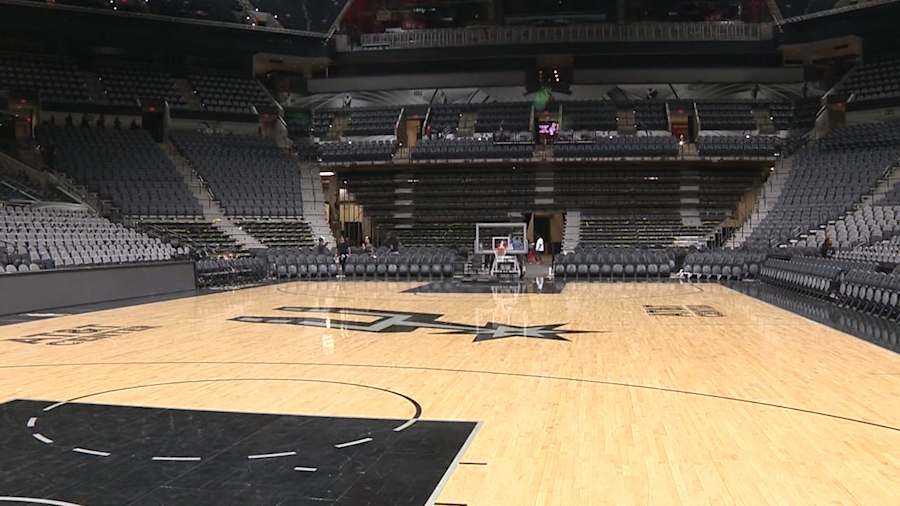SAN ANTONIO – From the outside, it’s unmistakable.
The building at the corner of East Houston Street and AT&T Center Parkway, with its super-sized lettering and flashing lights, always hints at something exciting happening inside.
What that is, though, depends on the day of the week.
The AT&T Center’s events are all mapped out on a carefully planned calendar, and sometimes they butt up, back to back.
For example, the two professional teams who play there, the San Antonio Spurs and San Antonio Rampage, often have games on consecutive days.
When that happens, the playing space has to be converted quickly, from a basketball arena to an ice hockey rink, or vice versa.
“It's a lot that goes on. It's a big process,” said Jeremy Sheffield, operations manager for the facility.
It’s a process that literally has to happen overnight, and Sheffield oversees it all.
He says a team of about 40 people, most temporary workers, gets started on the job right after the final buzzer of the night.
If the most recent setting was for a hockey rink, they will cover up the ice, rather than melt it.

They lay down a 500-piece protective flooring that fits together like a jigsaw puzzle.
“It's a compressed fiberglass which is waffled on the bottom so the ice can actually breathe up underneath,” Sheffield said. “The hockey ice is actually cooled or frozen from the bottom up.”
With that layer in place, they then put down the official basketball court flooring and put the goals in place.
Another team, meanwhile, sorts out the fans’ seating arrangements.
“One thing that you have to think about with all this manual labor is safety, of course,” Sheffield said.
At the same time, he said, they have a looming deadline on their minds.
Everything must be ready to go by morning, when the visiting team arrives for shoot-arounds.
Working in a space with no windows, crew members sometimes don’t realize when daylight arrives, Sheffield says.
He says it takes a special type of person to work all night, while most people are sleeping.
“Just like the majority of us are made for daytime, they are made for nighttime,” he said.
To see the full time lapse video showing the entire transition process, click below.




